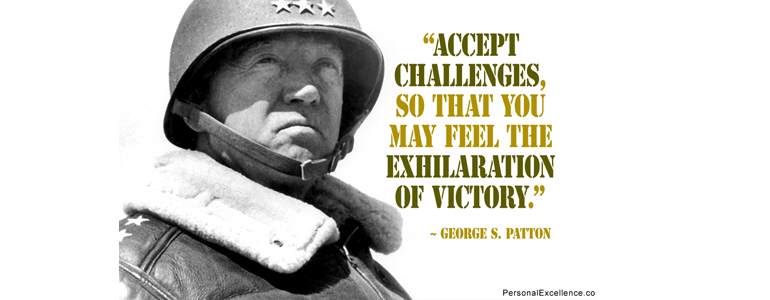Blog
Three MORE Email Marketing Improvement Challenges for 2014
by Karen Talavera
05 09, 2014 | Posted in Email Marketing, Marketing Vision | 0 comments

Last month we looked at three email marketing improvement challenges for 2014. This month I want to give you three more that can maximize email’s contribution to your bottom line. Although improving email open and click-through rates seems an ever-present task, I encourage you to expand your focus beyond mere campaign-by-campaign process metrics and try these program-level objectives on for size instead:
1) Increase Subscriber Engagement
Truly increasing subscriber engagement with your email campaigns means much more than merely boosting open and click-through rates, although both are important measures of engagement. It means analyzing open and click-through reach – that is, the proportion of your subscriber base, among all subscribers, who have opened or clicked at least one message over a period of time.
True subscriber engagement analysis measures not just how subscribers are performing over individual campaigns, but how they are interacting with your entire program – your brand – and your company. If your email subscribers are also customers, what this really tells you is “what are my customers doing?” with your email.
Look beyond campaign-by-campaign open and click-through rates, and even aggregate YTD equivalents, and measure the breadth of subscribers who have opened and/or clicked, as well as their depth of their activity. This will allow you to map a frequency distribution of openers and clickers across your entire list which makes it possible for you to see exactly who is highly engaged, who is barely hanging on, and who is completely inactive, then segment appropriately for unique messaging to each group.
A solid subscriber engagement analysis can reveal important insights, such as whether your engaged population is diverse and wide-spread, or highly clustered into a group of the same people time after time.
(For the ultimate Email Engagement Analysis Guide, click here)
2) Increase Revenue-Per-Subscriber (aka Revenue-per-Email)
If you can attribute revenue – directly or indirectly – to email as a channel, then challenge yourself to increase revenue-per-subscriber. (B-to-B and lead nurturing marketers, I know, I know, revenue attribution to email specifically can be a beast). Still, this one’s worth a try.
Revenue-Per-Subscriber (email list member) is a relatively simple calculation you can conduct campaign-by-campaign or for a period of time (a quarter or year) which derives the average revenue generated per email subscriber on your list. (See this post to refresh your memory)
Challenging yourself to grow RPS is potentially two-pronged. On the one hand, if you increase subscriber engagement (see challenge #1 above), chances are you’ll increase overall sales from email, at least temporarily. On the other hand, you might need to increase either conversion rate or average order value (AOV) – or both — to significantly move the needle on RPS if open/click engagement is already optimal. Accepting this challenge means you’re willing to deep-dive into where exactly in the conversion path response is falling off, as well as experiment in conversion optimization by testing segmentation, offers, creative and more.
3) Increase (or begin) Behaviorally-Triggered Email Campaigns
If you’re not using triggered email, you’re missing out on the highest ROI-producing email messages you can send. Research has found that behaviorally-targeted trigger email campaigns achieve 30% higher open and click-through rates and three times the conversion rates of broadcast email (this is even higher response than tightly-segmented broadcast campaigns receive).
When you can track and measure customer interaction and/or response behavior, it’s possible to send highly-specific and relevant emails to subscribers at exactly the optimum moment for communicating to them based on a specified time, date, event or action/inaction. Marketers employing triggered-email are able to program each element of a triggered campaign, including:
- The event, action or specified time (the “trigger”) that initiates the sending of an email
- Timing delays for scheduling and initiating message delivery
- The subject line and content of the message
- The individual (or characteristics of a group of individuals) who should receive the triggered message
- The cadence of messages in a sequence, or “track”
- The number of messages in a track
Common types of triggered email campaigns include:
- Welcome messages
- Purchase thank-you (bounceback campaigns)
- Up-sell/Cross-sell (suggested next purchase)
- Lead nurturing series
- Educational series
- Renew/Replenish offers
- Birthday and Customer Anniversary emails
- Reactivation
If you’re still employing a mostly broadcast, one-size-fits-all email marketing strategy, it’s high time to supplement it with behaviorally-driven triggered programs. True, you’ll have to invest some time thinking through your trigger points, mapping a messaging strategy and setting up deployment rules, but even the most basic of email platforms include marketing automation that can accommodate this.
If you know you’re behind the curve in using behaviorally-driven email or if getting it set up has been relegated to the back burner for far too long, then of the three challenges here, begin with this.
What do you think? What have been your biggest growth challenges and successes when you met them? Tell me in comments below which of the above you’re already doing (or plan to do), and how you’re progressing or what you’ve learned.
And as always, if you’re struggling I’m here to help. Request a free breakthrough session here or get specific coaching by the minute for your unique situation.
Tags: email list, email marketing, engagement, relevancy, response, revenue per subscriber, trigger, triggered-email

Leave a Comment